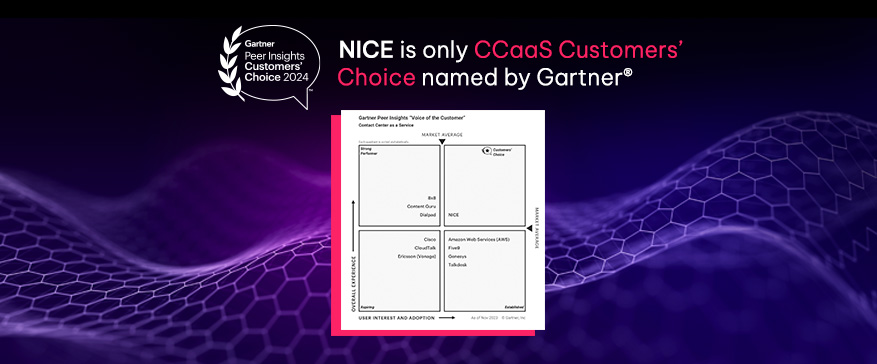- Key Takeaways
- Understanding Hyper Personalization in CX
- Evolution from Traditional to Hyper Personalization
- Key Benefits of Hyper Personalization
- Leveraging Customer Data for Hyper Personalization
- Implementing Hyper Personalization Strategies
- Real-World Examples of Hyper Personalization
- Challenges and Considerations in Hyper Personalization
- Future of Hyper Personalization in CX
- Summary
- Call to Action
- Frequently Asked Questions
Key Takeaways
Hyper-personalization enhances customer loyalty by utilizing advanced technologies like AI and predictive modeling to tailor experiences based on individual preferences and behaviors.
The shift from traditional personalization to hyper-personalization allows businesses to deliver more targeted marketing strategies, significantly improving customer satisfaction and retention.
Despite its benefits, businesses must navigate challenges such as data privacy, the risk of over-personalization, and the integration of new technologies with existing systems to successfully implement hyper-personalization strategies.
Understanding Hyper Personalization in CX

Evolution from Traditional to Hyper Personalization
The era of hyper-personalization has ushered in a significant shift from traditional personalization methods. Traditional personalization often relied on basic demographic data to guide marketing strategies, offering a one-size-fits-all approach. However, as technology evolved and consumer behavior became more complex, a more refined approach was necessary. Hyper-personalization considers multiple data points and customer segmentation to deliver targeted messages, setting a new standard in customer engagement.The evolution of personalization has been largely driven by technological advancements and changes in consumer behavior. Improvements in technology, such as big data, IoT, and machine learning, have fundamentally transformed how businesses interact with customers. These technologies enable businesses to analyze vast amounts of data and derive insights that inform hyper-personalization strategies. This shift is not just about technology but also about understanding and adapting to the dynamic nature of consumer preferences.Hyper-personalization aims to create hyper-personalized experiences that are more conversational and engaging. Recent trends show a focus on creating interactions that feel natural and personal, enhancing the overall customer journey. These trends highlight the importance of advanced analytics and the need for businesses to stay ahead of the curve in delivering personalized experiences.Early Approaches to Personalization
Initial personalization methods relied heavily on demographic data to guide marketing strategies. Marketers would segment their audience based on age, gender, location, and other basic demographic factors. While this approach was a step forward from a generic message to all customers, it lacked the depth and precision needed to truly engage customers on a personal level.The limitations of this approach became evident as consumer expectations grew, paving the way for more sophisticated personalization techniques.Technological Advancements
The growth of big data and IoT technologies has significantly contributed to a new level of personalization in customer experiences. In the early 2010s, there was a surge in data. This, combined with advances in analytics, allowed organizations to provide highly personalized experiences.Machine learning algorithms analyze data to predict individual interests, enhancing hyper personalization strategies. Predictive modeling, customer insights, and real-time data analytics have become essential tools for creating tailored customer experiences.Current Trends in Hyper Personalization
Recent trends in hyper personalization show a move towards creating more conversational interactions and customer touchpoints, making the experience more engaging and personal. This involves leveraging advanced analytics and technologies to understand and predict customer needs and preferences in real-time.Focusing on these trends allows businesses to create hyper personalized customer journeys that enhance satisfaction and loyalty.Key Benefits of Hyper Personalization

Enhanced Customer Satisfaction
Case studies demonstrate that hyper-personalization significantly improves customer engagement and satisfaction across various sectors. Companies like Carvana and Hilton have successfully used hyper-personalization to enhance customer experiences, leading to increased satisfaction and retention.Combining personalized experiences with customer feedback and predictive analytics significantly enhances customer satisfaction and loyalty.Increased Customer Loyalty
Hyper-personalization fosters loyalty by implementing customer retention strategies and making customers feel valued. Brands leveraging hyper-personalization can enhance customer loyalty by creating tailored experiences that resonate with individual preferences.Various sectors showcase significant improvements in customer satisfaction and loyalty through the implementation of hyper-personalized strategies.Higher Conversion Rates
Targeted marketing and personalized content significantly increase customer engagement and the likelihood of conversion. AI and machine learning are crucial technologies for delivering personalized experiences at scale in 2024. Retailers are moving away from mass market promotions, opting for personalized offers to achieve better sales results.This approach not only boosts conversion rates but also ensures that customers receive relevant and timely offers.Leveraging Customer Data for Hyper Personalization

Types of Customer Data
Primary customer data points critical for hyper-personalization include purchase history, browsing behavior, and website interactions. Behavioral data, both historical and real-time, is essential for understanding customer needs and preferences. Customer feedback surveys, reviews, and social media comments are valuable data sources for understanding customer sentiments.Centralized customer data platforms and customer data management enhance personalization by offering product recommendations across channels.Data Quality and Management
High-quality data is essential to create meaningful and personalized customer experiences. Investing in data governance along with effective data storage solutions is crucial for managing large volumes of customer information. Hyper personalization requires integrating various technologies to analyze customer data effectively, leading to tailored marketing strategies.Ethical Considerations and Privacy
Customer consent and adherence to data privacy regulations must be obtained by brands before collecting data. Prioritizing transparency in data collection practices builds customer trust and ensures ethical data usage. Transparency in data usage is becoming a critical factor in maintaining customer trust in hyper-personalized services.Customers increasingly expect personalized interactions while also prioritizing the security of their personal data.Implementing Hyper Personalization Strategies
Implementing hyper personalization strategies requires advanced analytics methods, AI-driven predictive technologies, graph analytics, and natural language processing. Organizations must consider their specific needs and objectives when selecting hyper-personalization technologies. Successful implementation demands substantial investments in time, money, and resources to establish the necessary infrastructure.Effective hyper personalization delivers a seamless experience across all channels. This involves segmenting customers effectively, utilizing advanced analytics tools, and creating hyper personalized content through customer journey mapping. Each of these steps is crucial for delivering personalized experiences that resonate with individual customer preferences and needs.Segment Customers Effectively
Behavioral segmentation in hyper personalization is critical to create targeted and relevant experiences for different customer groups. By understanding customer behavior patterns and preferences, businesses can tailor their approach to meet the needs of distinct segments.Effective customer segmentation leads to more satisfied customers, reinforcing loyalty and encouraging repeat business.Utilize Advanced Analytics Tools
Predictive analytics and advanced analytics tools are essential for businesses aiming to achieve hyper-personalization by understanding customer behavior. NICE Ltd. combines advanced analytics with AI to provide businesses the tools necessary for effective hyper-personalization.Adopting real-time data analytics can enhance the ability to respond promptly to customer needs and preferences.Create Hyper Personalized Content
Crafting hyper personalized content is driven by understanding and utilizing customer preferences and behaviors for maximum engagement, which is a key aspect of personalized marketing. Personalized content can be delivered through product recommendations, email campaigns, or tailored website experiences.Real-time browsing data can be used by travel websites to suggest flights and hotels based on past preferences. Data from customers’ fitness trackers can be used to send targeted emails about exercise targets.Real-World Examples of Hyper Personalization

NICE Ltd.'s Solutions
NICE Ltd. offers analytics and AI-driven platforms designed to facilitate hyper-personalization in customer interactions. Their solutions leverage customer data platforms to provide product suggestions and personalized experiences across various channels. By integrating advanced analytics and machine learning algorithms, NICE Ltd. enables businesses to deliver hyper-personalized customer experiences that enhance satisfaction and loyalty.Industry Case Studies
Customer experience management and personalized recommendations in the travel sector resulted in a 23% increase in conversion rates. This was achieved through the use of user data. The banking industry has noted that personalized customer experiences could lead to revenue increases. These potential increases could be as high as 20%.These case studies illustrate how hyper personalization significantly enhances customer experience and loyalty across various industries. The success of hyper personalization underscores its critical role in driving business growth and customer engagement.Challenges and Considerations in Hyper Personalization
Implementing hyper personalization strategies comes with its own set of challenges. Addressing data privacy concerns and ensuring data privacy while maintaining a balance between automated interactions and human touch are some of the significant hurdles. Businesses must navigate these challenges to maximize the benefits of hyper personalization. Effective hyper personalization requires continuous monitoring and optimization to maximize return on investment.Another challenge is integrating new personalization technologies with legacy systems. This often presents significant technical difficulties, requiring seamless coordination between new systems and existing platforms. Successful integration ensures that businesses can deliver a consistent and seamless experience across all channels, enhancing customer satisfaction and loyalty.Over-personalization can lead to customer disengagement. The risk of a ‘creepy factor’ emerges when interactions feel excessively tailored. Businesses must strike a balance between personalization and respecting customer privacy to avoid this pitfall. Adhering to ethical considerations and ensuring transparency builds trust and delivers personalized experiences that resonate with customers.Data Privacy and Compliance
It is crucial to handle customer data with care, adhere to data protection regulations, and obtain consent before collecting data. Companies need to adhere to regulations like GDPR, which grants users rights regarding their data, including viewing, transferring, and deleting it.Effective data governance is essential for managing data usage and ensuring compliance with data privacy regulations. Anonymizing personal data through techniques such as masking can help maintain user privacy while still allowing for data analytics.Integration with Existing Systems
Integrating new personalization technologies with legacy systems often presents significant system integration challenges. Successful integration of hyper-personalization technologies requires seamless coordination between new systems and existing legacy platforms.This integration ensures a consistent and seamless experience across all channels, enhancing customer satisfaction and loyalty.Avoiding Over-Personalization
Over-personalization can lead to customer disengagement. The risk of a ‘creepy factor’ emerges when interactions feel excessively tailored. Businesses must balance technological capabilities, ethical considerations, and customer trust for successful hyper-personalization.Adhering to ethical considerations and ensuring transparency builds trust and delivers personalized experiences that resonate with customers.Future of Hyper Personalization in CX








